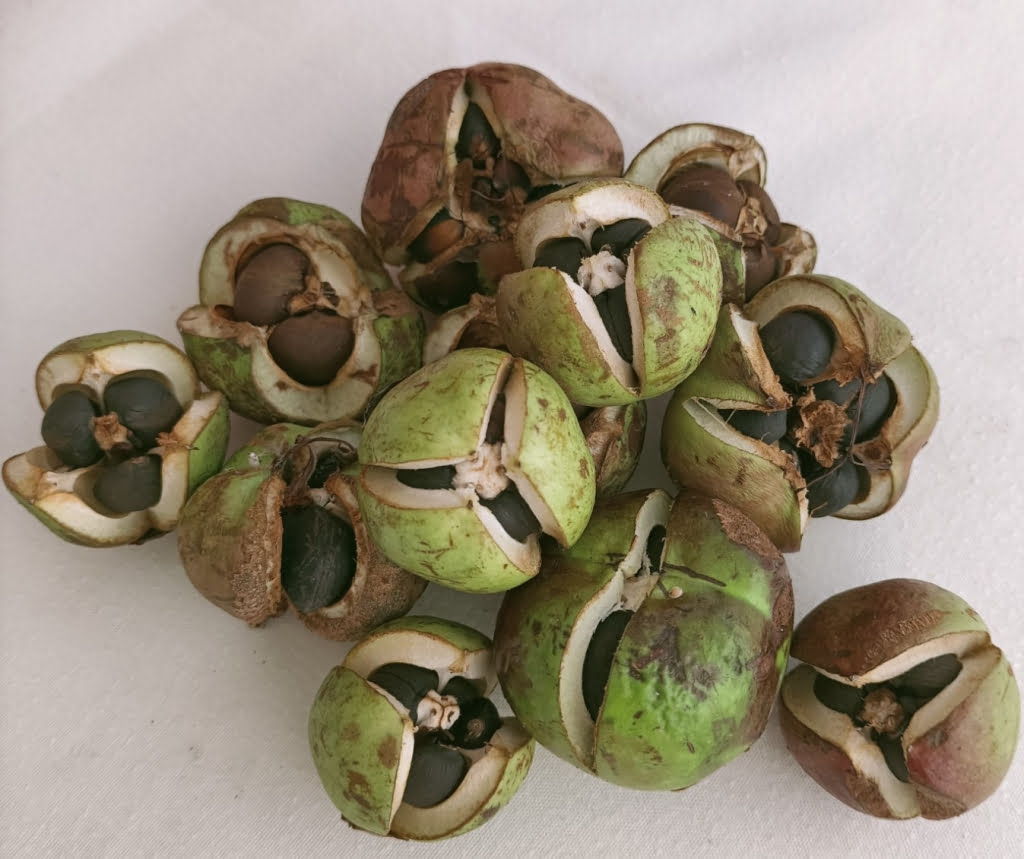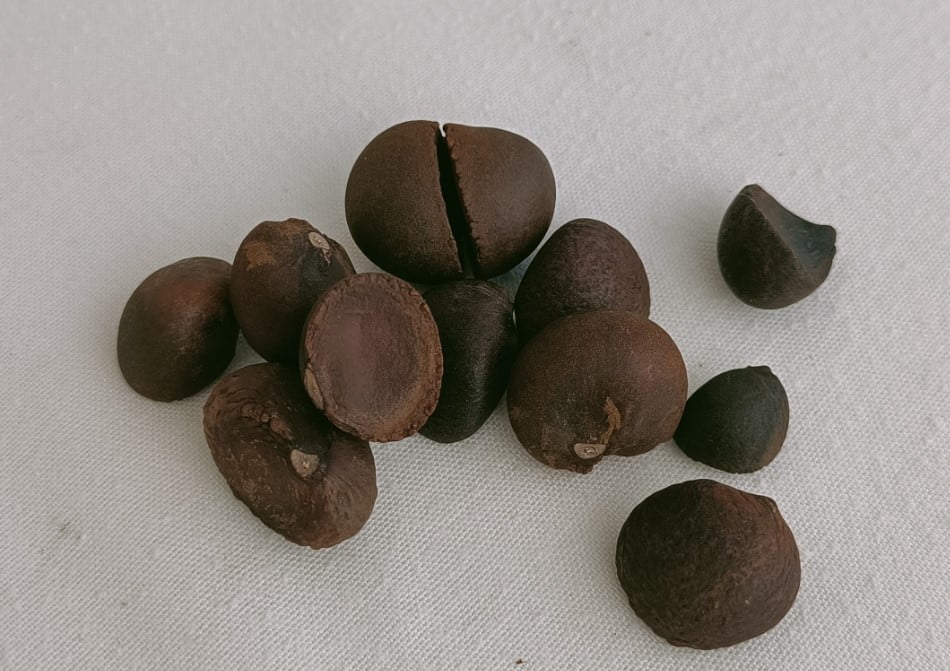In this article we will explain the most common dates to collect seeds in the Galicia area and surrounding areas (in Spain), as this is where Acemelia is located and where we have years of experience in collecting seeds and manufacturing camellia oil. In this area, the majority of camellias are japonica camellia and sasanqua camellia, although other species may exist.
When is the best time to collect camellia seeds?
The time for collecting seeds is in autumn, although it varies greatly with the varieties of camellia and with the climatic conditions and can even be brought forward to early August in the Galician Rías Baixas area, where the climate is warmer and dry. Generally the most common dates are in September and October, with some varieties reaching November and even December.
How do you know that camellia seeds are ripe?
The best way to identify that the seeds are ready to collect is when the fruits begin to open at the bottom and the dark brown seeds are visible.
How to collect the camellia seeds?
There are two main ways to collect seeds that we discuss below.
Method 1: Fruits picking This is the one we recommend because it is the simplest and quickest to do. It consists of seeing the moment when the seeds are ripe, as we mentioned in the previous block, and collecting the brownish-green fruits directly.
Next, spread all the fruits on a dry ground or surface, where preferably the sun hits it. In this way, in about 2-3 days the fruits will open on their own and the seeds will begin to fall without having to make any efforts. Each fruit has between 4-5 seeds.
The last step is to sweep up the seeds and store them in a dry place in a box, basket or bag (never plastic) where the seeds can breathe so they do not rot.
This method makes collecting the seeds much easier and cleaner, since the seeds are never in contact with the ground and are free of dirt.
Method 2: Collecting the camellia seeds. This method consists of waiting for the seeds to fall by themselves from the fruit on the plant itself. The problem is that the seeds will be in contact with the ground, so they will be dirtier and the risk of rotting is greater. In addition, it is a slower and more tedious job since the seeds are small in size and similar in color to the soil. You can make this task easier by putting a cloth or tarp under the plant when the seeds begin to mature. This makes collecting the seeds easier, but you will have to collect them several times because the seeds do not fall all at once and if they are left If left outdoors for many days and there is environmental humidity, the seeds can rot.
What to do with camellia seeds?
The main use of the seeds is to reproduce camellias, for this they would have to be planted although their germination rate is usually quite low so it is often necessary to give them a cold shock or put them in water for a couple of days. Camellia oil can also be made from the seeds. Acemelia manufactures a cosmetic oil of the highest quality by cold pressing and we buy camellia seeds from individuals. To do this you can contact us by phone or email at CONTACT










